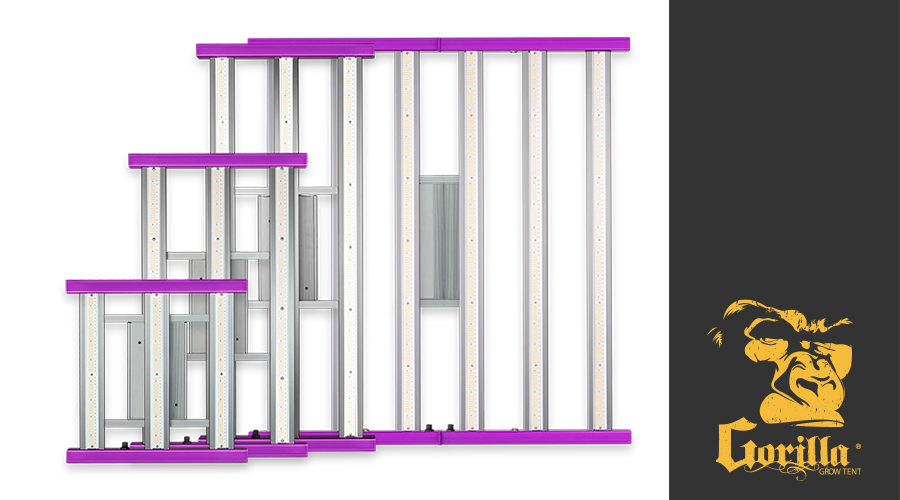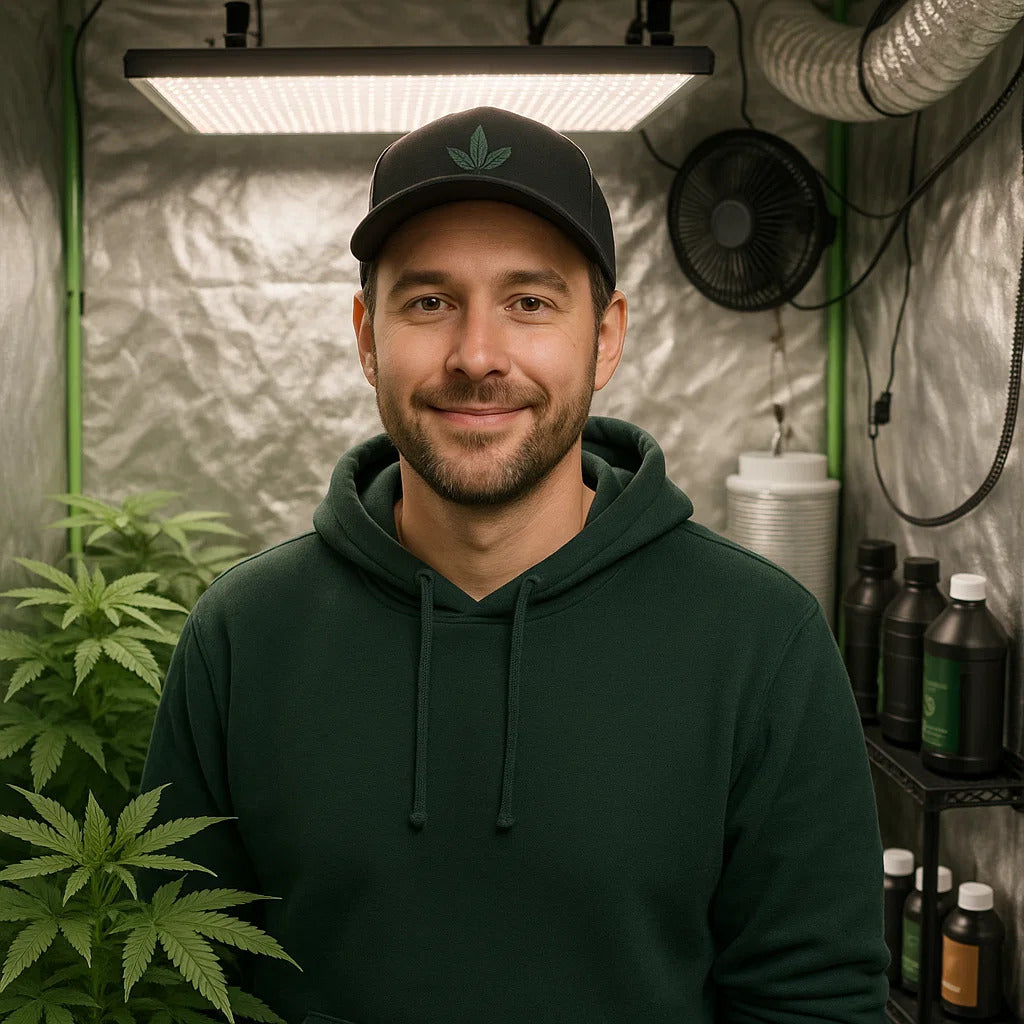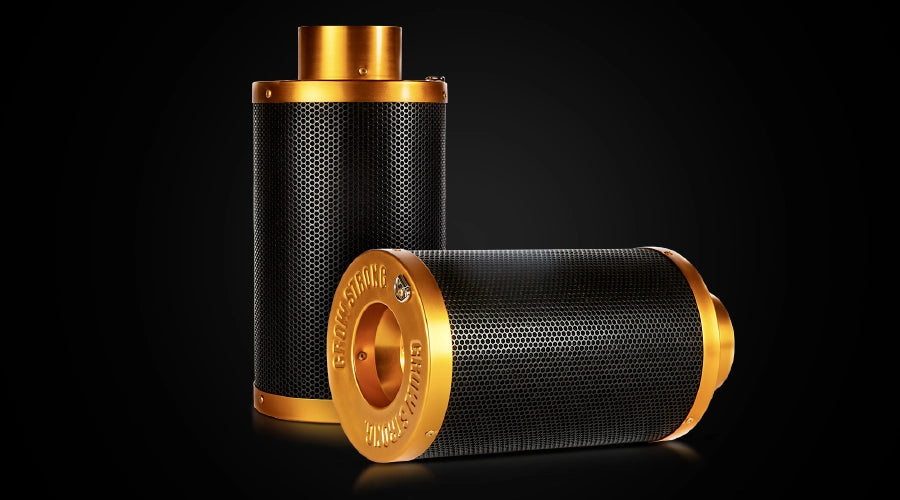
Shining a Light on Seed Starting: The Essential Guide to Grow Lights
When nurturing seeds into flourishing plants, providing the right light is crucial. As gardening enthusiasts and indoor plant lovers increasingly turn to seed starting, the role of grow lights has become paramount. These artificial light sources offer a reliable and efficient means of providing plants with the necessary light energy for robust growth.
By understanding the different types of grow lights, considering key factors, and implementing proper usage techniques, you can ensure your seedlings receive optimal light conditions for healthy development. So, get ready to ignite your gardening journey with the power of grow lights and watch your seeds flourish into a bountiful harvest!
In this article, we will delve into the world of grow lights for seed starting, exploring their benefits, different types, key considerations, and tips for maximizing their effectiveness.
The Importance of Grow Lights for Seed Starting
Natural sunlight is undeniably the best light source for plants, but it's not always accessible or sufficient, especially during colder months or in locations with limited natural light. Grow lights, designed to mimic the sun's spectrum, step in as a viable alternative. They provide the wavelengths and intensities seedlings require for photosynthesis and healthy development, ensuring strong roots, sturdy stems, and vibrant foliage.
Grow lights are crucial in seed starting, especially when natural sunlight is limited or inadequate. They provide a controlled and artificial light source that allows seeds to germinate and grow into healthy seedlings. Here are several reasons why grow lights are essential for successful seed starting:
Supplementing Natural Light:
Natural sunlight may be insufficient or inconsistent in many regions, particularly during winter or in areas with cloudy weather. Grow lights supplement natural light, ensuring that seedlings receive the necessary amount and quality of light to thrive. They provide a consistent light source, promoting steady growth and preventing leggy, weak seedlings.
Extended Photoperiod:
Seeds require a specific amount of light exposure to trigger germination and establish healthy growth patterns. Grow lights allow you to extend the photoperiod, providing the ideal duration and intensity of light required by the seeds. Controlling the lighting conditions can optimize the germination rate and promote strong, uniform growth.
Adjustable Light Spectrum:
Different stages of seedling development demand varying light spectrums. Grow lights can be customized to emit specific wavelengths of light, such as blue and red, which are crucial for different growth phases. Blue light promotes vegetative growth and the development of strong leaves and stems, while red light encourages flowering and fruiting. By adjusting the light spectrum, you can tailor the lighting conditions to meet the specific needs of your seedlings.
Flexibility and Control:
Grow lights offer flexibility in terms of placement and positioning. You can set up grow lights in any indoor location, allowing you to start seeds regardless of the outdoor conditions or available space. Additionally, the height and distance between the light source and seedlings can be easily adjusted to maintain the optimal light intensity and prevent the burning or stretching of the plants.
Consistency and Reliability:
Unlike natural light, which varies in intensity and duration throughout the day and across seasons, grow lights provide a consistent and reliable light source. This stability ensures that seedlings receive a constant supply of light, allowing them to photosynthesize efficiently and grow uniformly. It also eliminates the risk of sudden changes in light conditions, which can harm young plants' health and development.
Cost-Effective:
While setting up a complete grow light system may require an initial investment, it can be cost-effective in the long run. By starting seeds indoors with grow lights, you can extend the growing season and produce more transplants, reducing the need for purchasing expensive pre-grown seedlings. Additionally, grow lights are energy-efficient and designed to produce the ideal light output for plant growth, minimizing wastage and reducing electricity costs.
Types of Grow Lights
Fluorescent Lights:
Compact Fluorescent Lights (CFL) and T5 fluorescent lights are popular choices for seed starting. They emit a balanced spectrum of light suitable for various stages of plant growth and are relatively energy-efficient. CFL bulbs are affordable and readily available, making them an excellent choice for beginners. T5 fluorescent lights offer higher intensity and are ideal for larger seedling trays.
LED Lights:
Light Emitting Diodes (LED) have gained popularity recently due to their energy efficiency, longevity, and versatility. LED grow lights provide targeted wavelengths, allowing growers to tailor the light spectrum to meet specific plant requirements. They produce less heat, reducing the risk of scorching delicate seedlings, and are adjustable for different growth stages.
High-Intensity Discharge (HID) Lights:
HID lights, including Metal Halide (MH) and High-Pressure Sodium (HPS) lights, are powerful options experienced gardeners or commercial growers often use. MH lights emit a bluish light suitable for vegetative growth, while HPS lights produce a reddish spectrum ideal for flowering and fruiting. However, HID lights generate more heat and energy, requiring proper ventilation and cooling systems.
Key Considerations for Choosing Grow Lights
Light Spectrum: Different stages of plant growth require specific light spectrums. Look for grow lights offering a balanced spectrum with adequate blue and red wavelengths for vegetative growth and flowering stages.
Light Intensity: The light intensity directly affects plant growth. Ensure the grow lights provide sufficient foot candles or lux for your specific plant varieties.
Energy Efficiency: Opt for energy-efficient grow lights to reduce electricity costs and environmental impact. LED lights are renowned for their efficiency and long lifespan.
Coverage Area: Consider the size of your seedling tray or the number of plants you plan to grow. Select grow lights that can cover the desired area adequately.
Tips for Maximizing Grow Light Effectiveness
Adjust the Height: Seedlings should be positioned appropriately from the grow lights. Keep the lights closer for younger, smaller plants, and gradually increase the height as the plants grow taller.
Provide Adequate Duration: Seedlings require 14-16 hours of daily light to thrive. Use timers to ensure consistent and appropriate lighting durations.
Rotate Trays Regularly: To ensure even growth and prevent plants from leaning toward the light source, rotate the seedling trays every few days.
Supplement with Natural Light: Provide a few hours of natural sunlight and artificial lighting if possible. This combination can enhance plant growth and minimize potential light deficiencies.
Invest in Reflective Surfaces: Utilize reflective surfaces, such as white walls or aluminum foil, around your seedlings to maximize light distribution and minimize wastage.
Monitor Temperature and Humidity: Grow lights can generate heat, affecting the overall climate around your seedlings. Ensure proper ventilation and monitor temperature and humidity levels to maintain an optimal growing environment.
Grow lights have revolutionized the way gardeners approach seed starting, enabling year-round cultivation and enhanced control over plant growth.Remember to experiment, observe, and adapt as you gain experience to fine-tune your seed starting process and achieve gardening success.
Shedding Light on Grow Lights: Do They Work?
Indoor gardening has become increasingly popular in recent years, allowing enthusiasts to cultivate plants in the comfort of their own homes, regardless of the outdoor climate. One essential tool that has revolutionized indoor gardening is the grow light. But do grow lights truly live up to their claims?
Their customizable light spectrum, intensity, and duration offer precise control over plant growth conditions. By utilizing grow lights effectively, indoor gardeners can overcome the limitations of space, climate, and seasonal changes, fostering healthy plant development and increasing yields.
This article will explore the science behind grow lights and evaluate their effectiveness in supporting plant growth.
The Illuminating Effects of Grow Lights
Understanding Grow Lights
Grow lights are artificial light sources designed to mimic the natural spectrum of sunlight, providing plants with the necessary light energy for photosynthesis. Sunlight contains different wavelengths, including ultraviolet (UV), visible, and infrared (IR) light. Each wavelength plays a specific role in plant growth and development.
Grow lights are artificial lighting systems designed to provide the necessary light energy for plants to grow indoors. They are commonly used in indoor gardening, hydroponics, and plant propagation. Grow lights are particularly useful when natural sunlight is insufficient or not readily available, such as during the winter months or in areas with limited access to sunlight.
Here are some key points to understand about grow lights:
Light Spectrum:
Different stages of plant growth require different wavelengths of light. Grow lights are designed to support plant growth by providing specific light spectrums, including red, blue, and sometimes white. Red light is crucial for flowering and fruiting, while blue light promotes vegetative growth.
Types of Grow Lights
Several types of grow lights are available on the market, each with its own advantages and disadvantages. The most common types include:
Fluorescent Lights: Compact Fluorescent Lights (CFLs) and High-Intensity Discharge (HID) lights are popular for small-scale indoor gardening. They are relatively affordable and efficient but may not provide sufficient light intensity for larger setups.
LED Lights: Light Emitting Diode (LED) lights have gained popularity recently due to their energy efficiency, longevity, and customizable spectrum options. LED grow lights can be tailored to meet the specific needs of different plant species and growth stages.
High-Pressure Sodium (HPS) Lights: HPS lights emit a strong yellow/red light spectrum and are commonly used for flowering and fruiting stages due to their high-intensity output. However, they generate a significant amount of heat and require proper ventilation.
Metal Halide (MH) Lights: MH lights produce a bluish-white light spectrum suitable for promoting vegetative growth. They are often combined with HPS lights to cover vegetative and flowering stages.
Key Factors for Effective Plant Growth
Several crucial factors contribute to the overall effectiveness of grow lights in promoting healthy plant growth:
Light Intensity and Coverage:
Light intensity is an essential factor in plant growth. It determines how far the light can penetrate the plant canopy and affects the overall growth rate and yield. Different plants have varying light intensity requirements, so choosing a grow light with adequate coverage for your specific plants is important.
Light Duration:
Plants also require a specific duration of light exposure each day. This is known as the photoperiod and varies depending on the plant species and growth stage. Some plants require long days (more than 12 hours of light), while others need short days (less than 12 hours of light) to trigger flowering.
Heat Management:
Grow lights generate heat, especially HID lights, which can potentially damage plants if not managed properly. Adequate ventilation and cooling systems should be in place to dissipate heat and maintain a suitable temperature for plant growth.
Energy Efficiency:
LED grow lights are known for their energy efficiency, consuming less electricity compared to traditional lighting options. This can help save on energy costs and make them a more sustainable choice for indoor gardening.
Benefits of Grow Lights
Extended Growing Season:
With the help of grow lights, gardeners can extend the growing season throughout the year, bypassing the limitations imposed by changing seasons and unfavorable weather conditions.
Increased Yield and Quality:
Grow lights optimize photosynthesis by providing the ideal light intensity spectrum, enhancing plant growth, increasing yields, and improving overall plant quality.
Versatility:
Grow lights cater to various indoor gardening needs, including seed starting, vegetative growth, flowering, and even hydroponic or vertical farming setups. They can be used in small indoor spaces, apartments, or larger commercial operations.
Plant-Specific Optimization:
Different plants have unique light requirements. Grow lights allow gardeners to tailor the lighting conditions to suit the specific needs of each plant species, ensuring maximum growth potential.
Harnessing the Magic of Grow Lights
While grow lights can be a valuable tool for indoor gardening, it's important to remember that they are just one component of successful plant cultivation. Other factors, such as proper watering, nutrition, and environmental conditions, should also be considered for optimal plant growth.
Combining the advantages of grow lights with proper care allows indoor gardeners to create thriving botanical sanctuaries within their homes.
Why Are Full Spectrum LED Grow Lights Game Changers for Indoor Gardening?
Full spectrum LED grow lights are a type of lighting technology used in indoor gardening and growing plants. These lights emit a wide variety of wavelengths, including both blue and red light, which are essential for plant growth and development.
The lamps we are talking about have become increasingly popular in recent years due to their energy efficiency, longevity, and ability to produce high-quality light that can be adapted to the specific needs of different plant species. They are often used in hydroponic systems, indoor grow rooms and other indoor garden setups.
Full spectrum LED grow lights typically contain a wavelength range of 400 to 700 nanometers (nm), which includes both visible and invisible light. The visible light range includes blue light (400-500 nm) and red light (600-700 nm), which are essential for plant growth and development.
How Full Spectrum LED Grow Lights Can Optimize Your Indoor Grow Installation
The light spectrum emitted by full-spectrum LED grow lights is designed to mimic natural sunlight, providing the light energy needed for photosynthesis and promoting healthy plant growth. This type of lighting technology is highly efficient and contributes greatly to indoor gardeners achieving high yields and healthy plant growth.
Blue light is important for vegetative growth, promoting healthy vegetation and stimulating chlorophyll production; Red light is essential for the flowering and fruiting stages of plant growth, promoting healthy flowers and increasing yields.
In addition to blue and red light, it can include other wavelengths such as ultraviolet (UV) and infrared (IR) light. UV light can stimulate the production of essential oils in plants, while IR light can stimulate plant growth and increase the efficiency of photosynthesis.
The Benefits of Full Spectrum LED Grow Lights for Sustainable Agriculture
Full spectrum LED grow lights are known for their energy efficiency and long lifetime compared to traditional grow lights such as high-pressure sodium (HPS) or metal halide (MH) lamps. They also generate less heat, reducing plant damage and fire hazards.
Another advantage of these lamps is their versatility. They can be used to grow a wide variety of crops, from small plants to large fruits and vegetables. They are also suitable for a variety of indoor growing setups including hydroponic systems, vertical farms and indoor grow tents.
Compared to other lighting options, full spectrum LED grow lights have a higher upfront cost but generally have a longer lifespan and lower energy costs over time, making them a more cost-effective option in the long run.
Besides the plant growth benefits of full spectrum LED grow lights, they are also known as environmentalists. LED lights help reduce the environmental impact of agriculture by reducing energy consumption and lowering the carbon footprint of indoor growing.
Tips for Using Full Spectrum LED Grow Lights
When choosing this light, it is important to consider factors such as coverage, wattage, and light spectrum. The specific needs of your plants also affect the type of grow light you choose.
Lamps come in a variety of shapes and sizes, including panels, rods, and bulbs, allowing growers to customize their lighting setup to their specific needs. Some lights also come with features such as dimming and timing settings, allowing growers to adjust the intensity and duration of the light to optimize plant growth.
However, it is important to note that not all LED grow lights are created equal. Some cheaper LED grow lights may not actually provide a full spectrum of light and may not be as effective as higher-quality lights. It's important to research and choose a reputable brand with quality reviews and a proven track record.
Overall, full-spectrum LED grow lights are a popular choice for indoor growers looking for an efficient and effective way to grow plants indoors. With its full wavelength range, energy efficiency, and versatility, it is a great option for growers of all skill levels.

Lena Myles
I'm a mushroom enthusiast and home cook based in Oregon. I'm passionate about foraging and creating fungi-focused recipes, especially delicious, plant-based dishes using gourmet mushrooms like trumpet, shiitake, and oyster. When I’m not in the kitchen, you’ll usually find me wandering the woods in search of new wild flavors.



